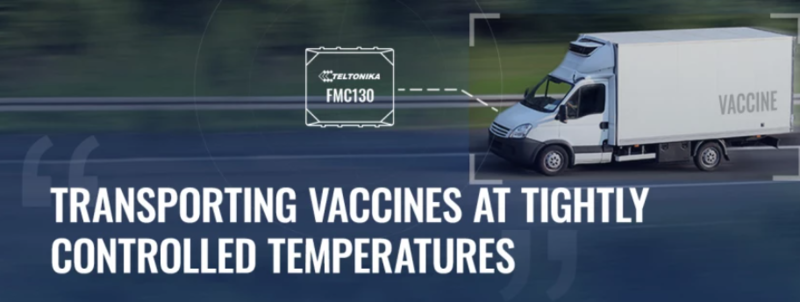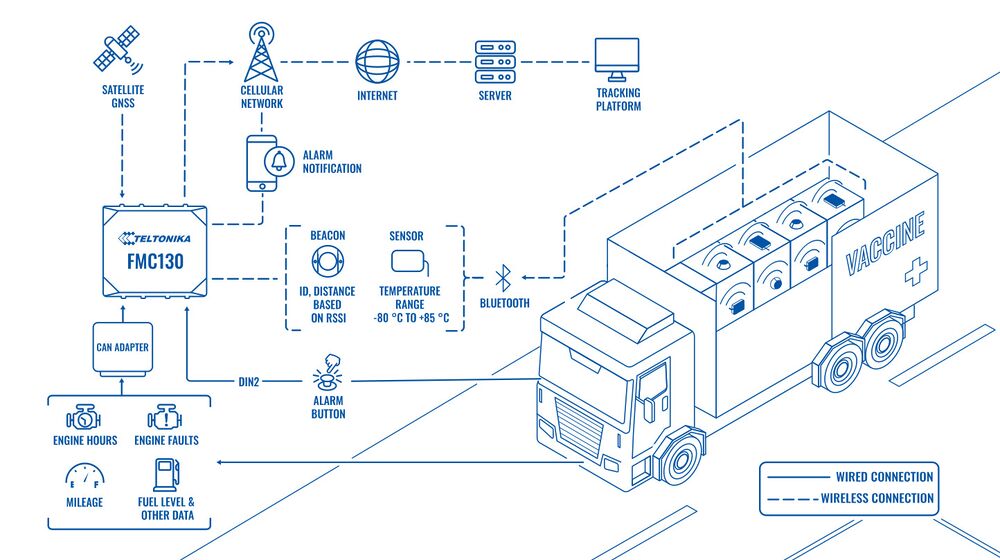Vaccine Distribution
Introduction
Vaccines save millions of lives every year. Immunization has proved its immense value in preventing such diseases as measles, polio, diphtheria and many more. Recent developments show that its significance will only continue to rise with the COVID-19 pandemic clearly indicating how fragile our world is. Vaccines are vital for getting back to regular life and effective logistics solutions are needed to make sure they are delivered in proper quality.
Challenge
Transporting vaccines safely and rapidly is as important as the development and manufacturing processes. The doses can only serve their purpose if they are delivered undamaged. Based on World Health Organization estimations, approximately half of the vaccines distributed around the world, unfortunately, go to waste. What makes them such sensitive cargo?
First and foremost, it is the temperature at that vaccines must be stored at. It can range from 2-8°C up to ultracold -80°C depending on a specific drug and short or long-term storage. If temperature controls fail, vaccines spoil meaning that all efforts to deliver them to the needed are in vain. When it comes to the COVID-19 pandemic, no similar scenarios can be allowed as too much is at stake with entire countries being under lockdowns and experiencing many other restrictions.
Managing hundreds of millions of doses in transit is another tremendous challenge. Coronavirus has brought the world to an unprecedented situation. Vaccines are equally in demand across the globe at the very exact time. The amounts are enormous, thus, careful planning plus robust monitoring capabilities are required to ensure effective logistics.
In addition to the sheer volume that has to be shipped, supply chains are further aggravated by the urgency and the need for precision in distribution. Not only the long-awaited COVID-19 vaccine itself, delivering many immunization-related equipment and medical supplies is actually a matter of life and death. Without delay and right there where it is needed – this is the challenge that logistics, delivery services and pharmaceutical companies face alike.
No place on Earth is immune to viruses, which means that doses to fight various diseases are needed by people in very diverse places, including remote and hard-to-reach locations. Some of them might not have proper road infrastructure or modern means of transportation. All this raises the risk that precious cargo might not safely reach its final destination, not excluding the danger of thefts either. Keeping the track of the whole transportation process – from the manufacturer to last-mile delivery – is essential.

Solution
Challenges with distributing vaccines are many and Teltonika Telematics is ready to offer solutions to meet them aptly. Among a wide range of tracking devices, FMC130 is one of the finest choices for the industries involved in delivering immunization supplies. The advanced 4G LTE GPS tracker has a fallback to 3G and 2G networks, accordingly, granting the best possible coverage and very reliable connectivity.
Teltonika Telematics trackers support Bluetooth® (BLE) technology, which is key in ensuring that the required temperatures are maintained throughout the entire time while vaccines are being transported. Using this technology, GPS trackers are connected with BLE sensors that monitor cargo temperature. The values to watch are configured depending on a particular vaccine’s specifications.
Certain BLE sensors, equipped with external probes, can monitor temperatures as low as -80°C, this way meeting even the most stringent requirements for the supply chain, including the COVID-19 vaccines. Whenever a diversion from the set limits occurs, a notification is sent. The company in charge of transportation, being alerted, can take prompt actions to find out the reason and remedy the situation.
BLE sensors from different manufacturers are available on the market. If BLE sensors broadcast their data, the clients can connect them to our trackers using advanced configuration settings. In case it is connection-type BLE sensors, they can be used by proceeding with the firmware development.
Besides making certain that vaccines are transported, stored and handled at tightly controlled temperatures, GPS tracking devices facilitate distribution by giving the possibility to track shipments real time. For the delivery process to be effective, one needs the ability to know where the cargo is at any given time and – in case something goes not according to plan – be notified immediately.
This is exactly what GPS tracking is about. Our trackers provide an accurate location-based information with many additional data to make wise and appropriate decisions. Changes and adjustments can be implemented on-the-go to optimize routes, prevent delays and solve unforeseen situations. The ultimate goal is precise and timely deliveries – even taking into account the massive scale and urgency of the COVID-19 vaccines’ logistics operations.
Valuable cargos tend to be a target for thefts and vaccines are no exception. Especially when they are in such high demand as is the case with the COVID-19 pandemic. Teltonika Telematics has an anti-theft solution that effectively prevents package losses by combining a GPS tracker with a CAN-CONTROL adapter. The solution – perfect for delivery services – can be applied with great results when distributing vaccines as well.
An alarm button is another measure that substantially increases the safety of both – drivers and cargo. In the event of a troubled situation – be it an accident on the road or any other kind of danger – a notification will be sent to call for assistance from the company’s side. FMx130 series devices feature negative input that allows for saving time while connecting alarm buttons, vehicle door sensors and other accessories.
To know precisely when the shipments are delivered or already close to delivery, geofences can be used. These are the virtual boundaries of a desired perimeter – once crossed, a pre-defined notification (alarm buzzer, SMS, email, etc.) will be activated. Similarly, it can be recorded when vaccines or other supplies leave a specified territory.
Having a large fleet inevitably means dealing with maintenance issues. With the help of GPS trackers, fleet maintenance can be turned into an automated process making sure that vehicles are kept in a good condition. Otherwise, unexpected breakdowns can cause serious disruptions in the supply chain and may even lead to ruining vaccines if the storage conditions fall behind the needed level.
Besides, our tracker FMC130 offers additional functions and features to build and preserve effective distribution: working without the external power source, CAN data reading, and various scenarios including Overspeeding detection, Excessive Idling detection, Towing detection, etc.
Moreover, our extensive product portfolio allows choosing tracking devices that suit the client’s needs and priorities best – in terms of network technology, modes of transportation, installation costs, local laws and regulations, and more.
In fact, the tracking devices of Teltonika Telematics, one of the leading manufacturers in the telematics industry, are already widely used across the globe. If a company engaged in transporting vaccines has already installed our trackers and, for example, only the ability to monitor temperature is lacking, it is very easy to fix the situation. BLE sensors can be added to the fleet and trackers with BLE functionality and the latest firmware will detect them to start sending data once the configuration is complete. Updating firmware or changing configuring is simple and convenient as it is done remotely using our dedicated tool FOTA WEB.
Topology

Benefits
- Precise temperature monitoring up to -80°C – maintaining vaccines in controlled temperatures until their final destination.
- Effective logistics and distribution – making sure vaccines reach billions of people in time and save lives across the world, including remote and hard-to-reach places.
- Safe and reliable deliveries – preventing thefts and enabling informed decisions in unforeseen situations.
- Timely maintenance and service – keeping vehicles in a good condition to avoid irregularities in supply chains.
- Effortless inclusion of BLE sensors – adding temperature-monitoring functionalities easily and swiftly for the current users of our telematics solutions.
